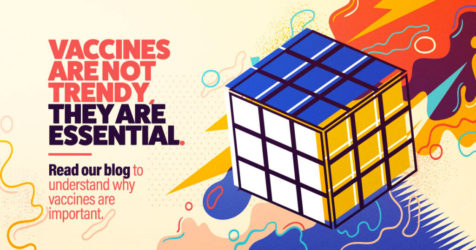Navigating Pediatric Migraines: Challenges for Children and Parents

As a parent, you may face a number of challenges when preparing for your child to return to school after a break. Arranging for transportation, adjusting to school and activity schedules and managing your own work schedule to accommodate these changes are just a few. If you have more than one school-age child, your challenges are multiplied. A whole other variable is thrown in when your child suffers from migraines.
Migraines can be debilitating and incapacitating. Your child’s pain and discomfort are not the only concerns. Young children and adolescents grappling with pediatric migraines often struggle to concentrate in class and manage their schoolwork. If your child has frequent migraines, the repercussions can ripple through their social lives, causing isolation. As a parent, you may face disruptions to your daily routine, unexpected work interruptions, schedule changes and missed activities and events.
Migraine Symptoms
Recognizing the unique symptoms and triggers of pediatric migraines is crucial for effective management and support.
Although migraines in children and adults are the same disease, a child may experience migraines differently from an adult. Pediatric migraine symptoms include:
- Moderate-to-severe head pain
- Lasts from one hour to several days
- Nausea, vomiting
- Light and smell sensitivity
- Difficulty focusing
- Blurred vision
- Dizziness
- Abdominal pain
Four Stages of a Migraine
1. Prodrome/Pre-headache
- Early signs before a migraine, like mood changes, fatigue or sensitivity to light
- Can last several hours or several days
- Taking medication and avoiding triggers can reduce symptoms and sometimes prevent migraine progression.
2. Aura
- Some people see flashing lights or have other sensory changes.
3. Attack
- The intense headache phase
- Can last several hours to several days days
4. Postdrome/Migraine Hangover
- Fatigue, body aches, trouble concentrating, dizziness and sensitivity to light can occur after the attack.
Migraine Triggers
Most children experiencing a migraine will have an attack spontaneously. Yet, a clear cause or trigger may be identified for some children, and different people have different triggers.
Some of these adolescent migraine triggers are controllable, and some are not. Some causes are more common than others. For example, 70% of migraine sufferers report stress as a cause, and 33% say some degree of dehydration as a cause. Other common triggers for children include:
- Sleep: too much or not enough
- Foods and beverages: MSG, chocolate, dairy products, artificial sweeteners, cured meats, caffeine
- Odors: perfumes, strong food, chemicals, gasoline
- Light: natural, bright and fluorescent or flickering bulbs
- Weather: excessive heat, storms, changes in barometric pressure
Diagnosing a Migraine
Medical tests can’t diagnose your child’s head pain as a migraine. The most accurate way for a doctor to diagnose childhood migraines is through a conversation with you and your child. You may discuss such topics as family medical history and how the pain impacts their daily life and well-being.
Generally, a headache is considered a migraine when the head pain is severe enough to make a child miss school or other activities or keep them from being at their best.
Migraines are hereditary. According to the American Migraine Association, there is a 50-75% chance your child will be affected by migraines at some time if one or both parents have a history of migraines.
Diagnosing a Migraine
M3 Wake Research Network of Sites offers a variety of clinical trials for adults and children interested in volunteering to participate. Participants receive free study-related medical exams and medication and are compensated for time and travel costs.
Find out more about clinical research for migraines here.


